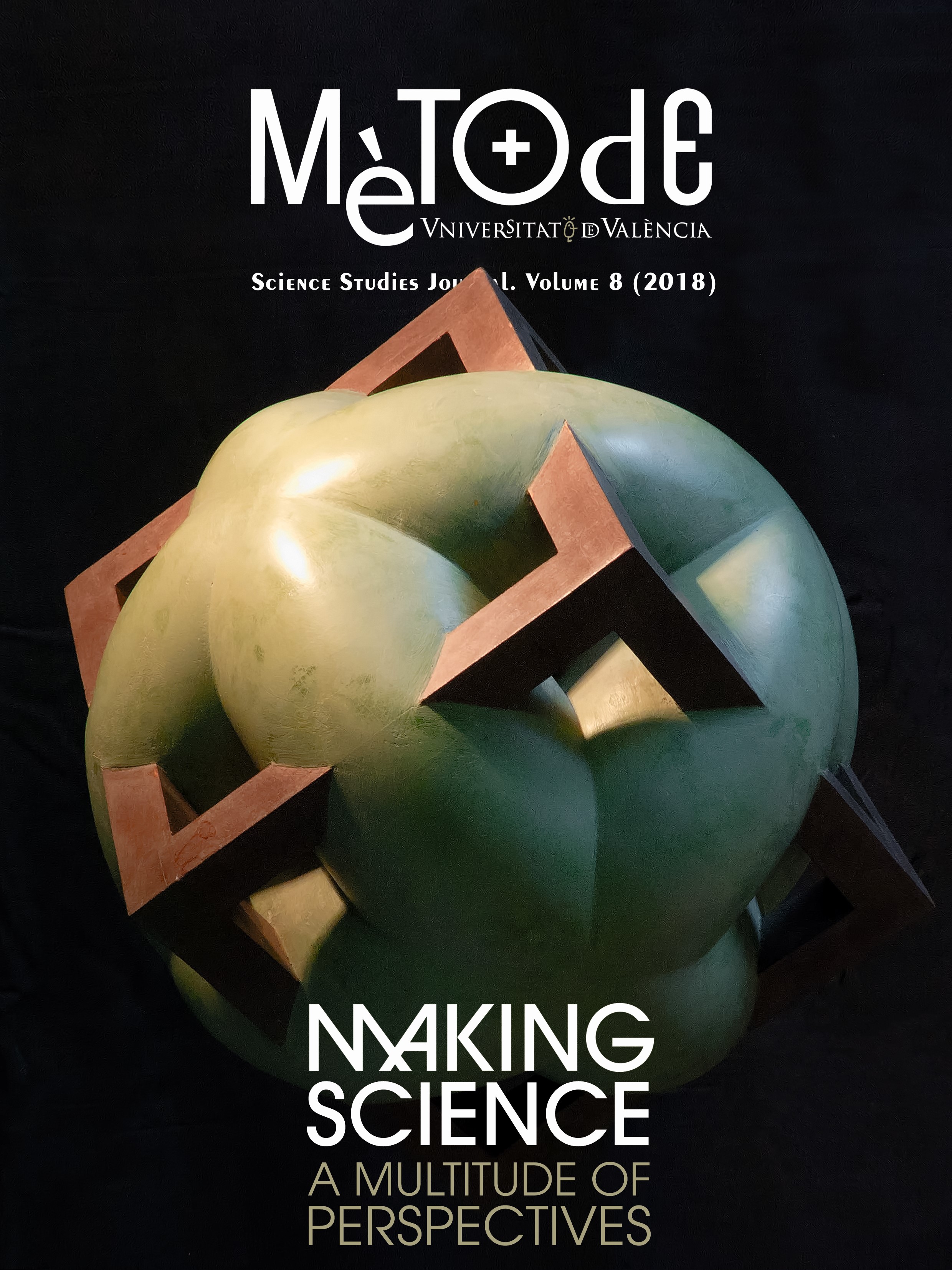Dismantling the rhetoric of alternative medicine: Smokescreens, errors, conspiracies, and follies
DOI:
https://doi.org/10.7203/metode.8.10004Keywords:
alternative medicine, fallacies, pseudoscience, argumentation Abstract
Abstract
Alternative medicine has a high social prevalence, being promoted by well organized groups that have developed an intricate rhetoric in order to self-justify in the absence of evidence. This article will analyse some of these arguments, some of their fallacies – ad populum, ad ignorantiam –, other styles of reasoning – conspiracy theories – and other misconceptions of scientific concepts – placebo effect, scientific authority. The objective will be to highlight the poverty of the rhetoric of proponents of alternative medicine, with special emphasis on the dangers for the consumer.
 Downloads
Downloads
 References
References
Ben-Arye, E., Frenkel, M., Klein, A., & Scharf, M. (2008). Attitudes toward integration of complementary and alternative medicine in primary care: Perspectives of patients, physicians and complementary practitioners. Patient Education and Counseling, 70(3), 395–402. doi: 10.1016/j.pec.2007.11.019
Blancke, S., Boudry, M., & Pigliucci, M. (2017). Why do irrational beliefs mimic science? The cultural evolution of pseudoscience. Theoria, 83(1), 78–97. doi: 10.1111/theo.12109
Byard, R. W. (2016). Traditional medicines and species extinction: Another side to forensic wildlife investigation. Forensic Science, Medicine and Pathology, 12(2), 125–127. doi: 10.1007/s12024-016-9742-8
Byard, R. W., Musgrave, I., Maker, G., & Bunce, M. (2017). What risks do herbal products pose to the Australian community? The Medical Journal of Australia, 206(2), 86–90. doi: 10.5694/mja16.00614
CAMbrella. (2012). CAMbrella Documents and reports. Retrieved from: http://www.cambrella.eu/home.php?il=203&l=deu
Dagnall, N., Drinkwater, K., Parker, A., Denovan, A., & Parton, M. (2015) Conspiracy theory and cognitive style: A worldview. Frontiers in Psychology, 6, 2–9. doi: 10.3389/fpsyg.2015.00206
Díaz, G., Moreno, G., & Balmy, S. (2012). Estudio sobre conocimiento y uso de homeopatía en España. Revista de Medicina Homeopática, 5(3), 113–119. doi: 10.1016/S1888-8526(12)70157-1
Ernst, E., Lee, M. S., & Choi, T. Y. (2011). Acupuncture: Does it alleviate pain and are there serious risks? A review of reviews. Pain, 152(4), 755–764. doi: 10.1016/j.pain.2010.11.004
Fundación Española para la Ciencia y la Tecnología. (2015). VII Encuesta de percepción social de la ciencia. Retrieved from: http://www.idi.mineco.gob.es/stfls/MICINN/Prensa/NOTAS_PRENSA/2015/Dossier_PSC_2015.pdf
Fundación Española para la Ciencia y la Tecnología. (2017). VIII Encuesta de percepción social de la ciencia. Retrieved from: http://www.idi.mineco.gob.es/stfls/MICINN/Cultura/FICHEROS/2017/Dossier_PSC_2017.pdf
Hansson, S. O. (2009). Cutting the Gordian knot of demarcation. International Studies in the Philosophy of Science, 23(3), 237–243. doi: 10.1080/02698590903196007
Izzo, A., & Ernst, E. (2009). Interactions between herbal medicines and prescribed drugs. An updated systematic review. Drugs, 69(13), 1777–1798. doi: 10.2165/11317010-000000000-00000
Jolley, D., & Douglas, K. (2014). The effects of anti-vaccine conspiracy theories on vaccination intentions. PLoS ONE, 9(2), e89177. doi: 10.1371/journal.pone.0089177
Lee, M. S., Pittler, M., & Ernst, E. (2008). Effects of reiki in clinical practice: A systematic review of randomised clinical trials. The International Journal of Clinical Practice, 62(6), 947–954. doi: 10.1111/j.1742-1241.2008.01729.x
Lewandowsky, S., Gignac, G., & Oberauer, K. (2013). The role of conspiracist ideation and worldviews in predicting rejection of science. PloS One, 8(10), e75637. doi: 10.1371/journal.pone.0075637
Mathie, R. T., Ramparsad, N., Legg, L. A., Clausen, J., Moss, S., Davidson, J. R., ... McConnachie, A. (2017). Randomised, double-blind, placebo-controlled trials of non-individualised homeopathic treatment: Systematic review and meta-analysis. Systematic Reviews, 6(1), 63. doi: 10.1186/s13643-017-0445-3
Ministerio de Sanidad, Política Social e Igualdad (2011). Análisis de situación de las terapias naturales. Retrieved from: https://www.msssi.gob.es/novedades/docs/analisisSituacionTNatu.pdf
Niggemann, B., & Grüber, C. (2003). Side-effects of complementary and alternative medicine. Allergy, 58(8), 707–716. doi: 10.1034/j.1398-9995.2003.00219.x
Pigliucci, M., & Boudry, M. (2014). Prove it! The burden of proof game in science vs. pseudoscience disputes. Philosophia, 42(2), 487–502. doi: 10.1007/s11406-013-9500-z
Posadzki, P., Watson, L., & Ernst, E. (2009). Adverse effects of herbal medicines: An overview of systematic reviews. Journal of the Royal College of Physicians, 13(1), 7–12. doi: 10.7861/clinmedicine.13-1-7
World Health Organization. (2001). Atención integral por escenarios de atención y niveles: Pautas de atención integral para personas que viven con VIH/SIDA en las Américas. Retrieved from: http://www1.paho.org/Spanish/AD/FCH/AI/BB_Summary_span.pdf
Downloads
Published
How to Cite
-
Abstract2148
-
PDF1098
Issue
Section
License
![]()
All the documents in the OJS platform are open access and property of their respective authors.
Authors publishing in the journal agree to the following terms:
- Authors keep the rights and guarantee Metode Science Studies Journal the right to be the first publication of the document, licensed under a Creative Commons Attribution-NonCommercial-NoDerivatives 4.0 International License that allows others to share the work with an acknowledgement of authorship and publication in the journal.
- Authors are allowed and encouraged to spread their work through electronic means using personal or institutional websites (institutional open archives, personal websites or professional and academic networks profiles) once the text has been published.





